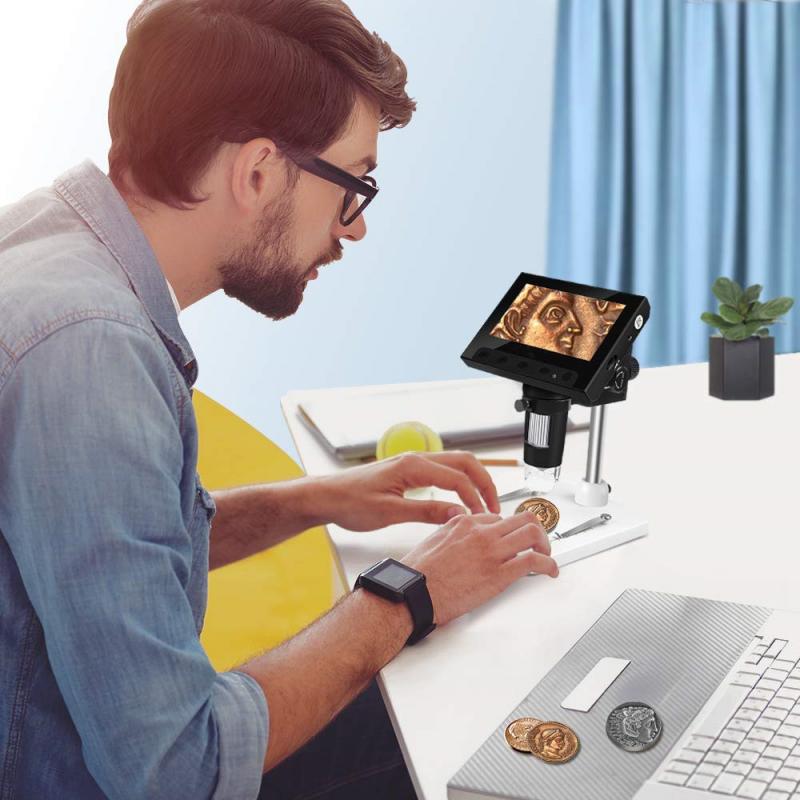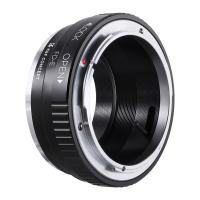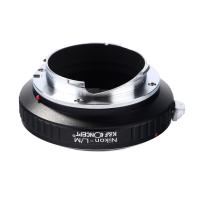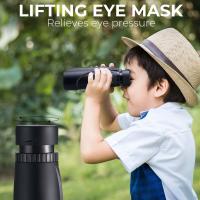What Accidents Might Happen When Using A Microscope ?
Accidents that might happen when using a microscope include eye injuries from improper handling or accidental release of the eyepiece, cuts or punctures from broken glass slides or coverslips, electrical shocks from faulty equipment, and chemical spills or exposure to hazardous substances. Additionally, there is a risk of strain or injury from prolonged sitting or poor posture while using a microscope. It is important to follow proper safety protocols, such as wearing protective eyewear, using caution when handling glassware, ensuring equipment is in good working condition, and maintaining a clean and organized workspace to minimize the risk of accidents.
1、 Eye injuries from improper use or handling of microscope
Eye injuries from improper use or handling of a microscope are one of the potential accidents that can occur. When using a microscope, it is crucial to follow proper safety guidelines to prevent any harm to the eyes.
One common cause of eye injuries is the incorrect positioning of the eyes in relation to the eyepiece. If the eyes are not properly aligned with the eyepiece, it can cause strain and discomfort, leading to potential eye injuries. It is important to adjust the microscope's eyepiece to ensure a comfortable and safe viewing position.
Another potential accident is the misuse of the microscope's lighting system. Direct exposure to intense light sources, such as halogen bulbs, can cause damage to the eyes. It is recommended to use appropriate filters or dimmers to reduce the intensity of the light and protect the eyes from potential harm.
Furthermore, mishandling of microscope slides can also lead to eye injuries. Broken or shattered slides can cause sharp fragments to fly into the eyes, causing damage. It is essential to handle slides with care and dispose of broken ones properly.
In recent years, there has been an increased focus on the potential risks of blue light emitted by digital devices, including microscopes. Prolonged exposure to blue light can cause eye strain, fatigue, and potentially long-term damage. Some microscopes now come with blue light filters or adjustable lighting options to minimize the risk of eye injuries associated with blue light exposure.
To prevent accidents when using a microscope, it is crucial to receive proper training on its safe use and handling. Regular maintenance and inspection of the microscope's components are also important to ensure its optimal performance and minimize the risk of accidents.

2、 Electrical shocks due to faulty wiring or improper grounding
When using a microscope, there are several potential accidents that could occur. One of the most significant risks is electrical shocks, which can happen due to faulty wiring or improper grounding. If the microscope is not properly wired or grounded, it can lead to an electric current passing through the user's body, resulting in an electrical shock. This can be particularly dangerous if the user is in direct contact with a conductive surface or if they are working with wet hands.
To prevent electrical shocks, it is crucial to ensure that the microscope is properly wired and grounded. Regular maintenance and inspections should be conducted to identify any faulty wiring or grounding issues. It is also important to follow the manufacturer's instructions and guidelines for safe use and maintenance of the microscope.
In recent years, there has been an increased focus on electrical safety in laboratory settings. Organizations and regulatory bodies have developed guidelines and standards to minimize the risk of electrical accidents. These guidelines often include recommendations for regular inspections, proper training of laboratory personnel, and the use of safety devices such as ground fault circuit interrupters (GFCIs) to protect against electrical shocks.
Additionally, advancements in technology have led to the development of microscopes with enhanced safety features. Some modern microscopes are equipped with built-in safety mechanisms that automatically shut off the power in the event of a fault or electrical surge. These safety features provide an added layer of protection for users and help prevent accidents.
In conclusion, while electrical shocks due to faulty wiring or improper grounding are potential accidents that can happen when using a microscope, they can be prevented through proper maintenance, adherence to safety guidelines, and the use of advanced safety features. It is essential for laboratory personnel to be aware of these risks and take necessary precautions to ensure their safety while using microscopes.
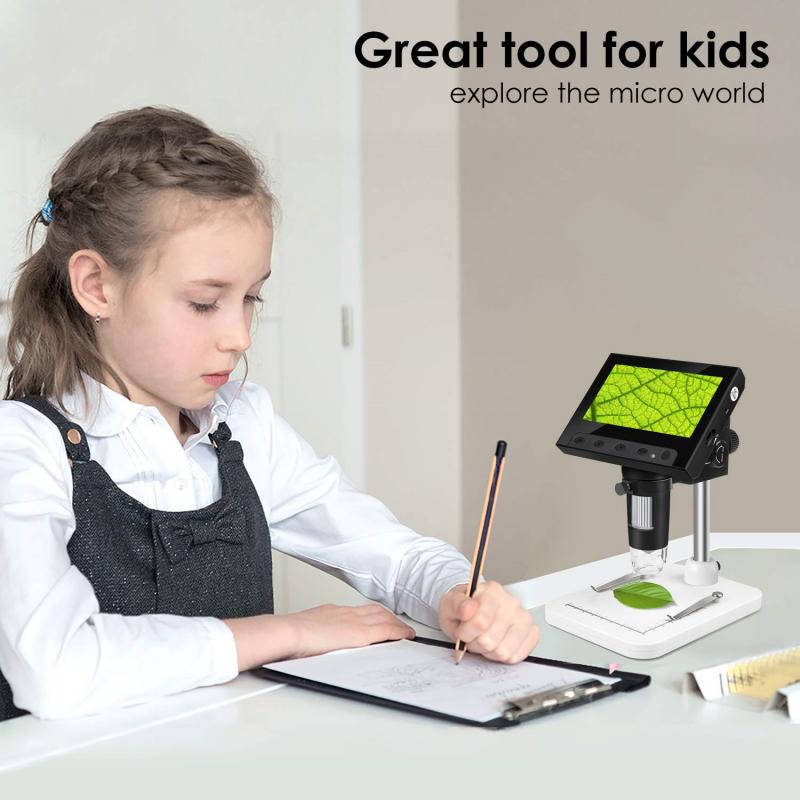
3、 Chemical spills or exposure to hazardous substances
When using a microscope, there are several potential accidents that can occur, with one of the most significant being chemical spills or exposure to hazardous substances. Microscopes are often used in laboratories where various chemicals and substances are handled, increasing the risk of accidents related to their use.
Chemical spills can happen when handling or transferring substances during microscopic analysis. These spills can lead to direct exposure to hazardous chemicals, which can have detrimental effects on the health and safety of individuals. Exposure to toxic substances can cause skin irritation, respiratory problems, or even more severe health issues depending on the nature of the chemical involved.
Furthermore, mishandling or improper storage of chemicals can result in accidental mixing or reactions, leading to the release of toxic gases or explosions. This can pose a significant risk to the individuals using the microscope and others in the vicinity.
To mitigate these risks, laboratories should have proper safety protocols in place, including the use of personal protective equipment (PPE) such as gloves, lab coats, and safety goggles. Additionally, proper training and education on the handling and storage of chemicals should be provided to all individuals using microscopes.
In recent years, there has been an increased focus on laboratory safety and the importance of minimizing chemical hazards. Organizations and regulatory bodies have developed guidelines and standards to ensure the safe use of microscopes and other laboratory equipment. These guidelines emphasize the importance of risk assessment, proper storage and handling of chemicals, and the use of engineering controls to prevent accidents.
In conclusion, while microscopes are invaluable tools in scientific research and analysis, they also pose certain risks, particularly in terms of chemical spills or exposure to hazardous substances. It is crucial for individuals using microscopes to be aware of these risks and to follow proper safety protocols to minimize the potential for accidents and ensure a safe working environment.

4、 Fire hazards from flammable materials near the microscope
When using a microscope, there are several potential accidents that could occur. One of the most common accidents is the risk of eye injury. Microscopes often have high magnification power, and if proper precautions are not taken, the user's eyes can be exposed to intense light or laser beams, leading to eye strain, damage, or even blindness. Therefore, it is crucial to wear appropriate eye protection, such as safety goggles, when using a microscope.
Another accident that may occur is the breakage of microscope slides or coverslips. These glass components are fragile and can easily shatter if mishandled. Broken glass can cause cuts or puncture wounds, posing a risk to the user. To prevent this, it is important to handle slides and coverslips with care and dispose of broken glass properly.
Additionally, fire hazards from flammable materials near the microscope can be a significant concern. Many laboratories use flammable chemicals or solvents, and if these substances are accidentally spilled or come into contact with heat sources, such as microscope lamps, it can lead to fires or explosions. To mitigate this risk, it is essential to keep flammable materials away from the microscope and ensure proper storage and handling procedures are followed.
Moreover, electrical accidents can occur if the microscope is not properly grounded or if there are faulty electrical connections. This can result in electric shocks or even fires. Regular maintenance and inspection of the microscope's electrical components are necessary to prevent such accidents.
In recent years, with the advancement of digital microscopes and imaging systems, there is also a risk of data breaches or privacy violations. As digital microscopes can capture and store images, there is a potential for unauthorized access or misuse of sensitive information. It is important to implement appropriate security measures, such as password protection and encryption, to safeguard data and prevent unauthorized access.
In conclusion, accidents when using a microscope can range from eye injuries and broken glass to fire hazards and electrical accidents. It is crucial to follow safety guidelines, wear protective equipment, and maintain a safe working environment to minimize the risk of accidents. Additionally, with the rise of digital microscopes, it is important to address potential data security concerns.
